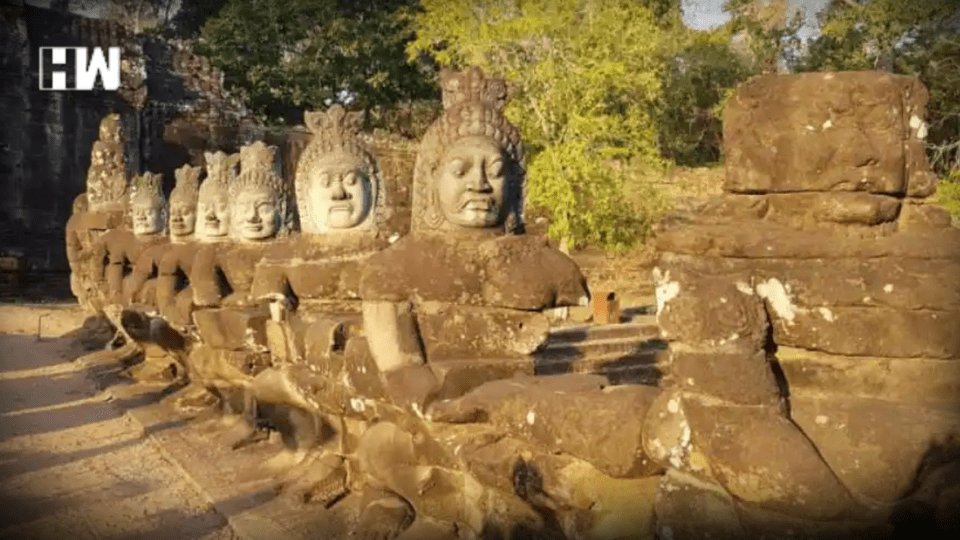India is funding the conservation work of ancient Ramayana-based murals in Angkor Wat’s Wat Raja Bo Pagoda in Cambodia’s cultural town of Siem Reap
Phnom Penh: India is funding the conservation work of ancient Ramayana-based murals in Angkor Wat’s Wat Raja Bo Pagoda in Cambodia’s cultural town of Siem Reap. The murals depict the Indian cultural impact on Cambodian society.
The Financing Agreement on Conservation and Preservation of Wat Raja Bo Pagoda Paintings is one of the four agreements signed today between India and Cambodia – in the fields of culture, wildlife and health.
Vice President Jagdeep Dhankar, who is here to attend the ongoing ASEAN Summit, today held a bilateral meeting with Cambodian Prime Minister Hun Sen.
Apart from wide-ranging discussions on bilateral ties, the leaders witnessed the exchange of four MoUs.
“The agreement is between Cambodia’s External Affairs Ministry and the Government of India.
India will give USD 70000 for the project for funding the local body APSARA, which will be doing the restoration work, ” DS Sood a conservation expert who is associated with the ongoing Archaeological Survey of India’s restoration work at the famed Ta Prohm Temple in Angkor Wat told Sources.
Sources was part of a delegation of journalists visiting Cambodia as part of India ASEAN media exhange programme India has been for long associated with the restoration work of temples in Cambodia.
Meanwhile, another MoU that was signed on the sidelines of the ASEAN Summit was between the IIT, Jodhpur, and the Institute of Technology, Cambodia in the field of Research, Development, and Application of Technology for Digital Documentation of Cultural Heritage.
A third MoU was signed in the field of health and medicine between the Ministry of Health and Family Welfare of India and the Ministry of Health, Cambodia.
Another agreement signed was regarding the reintroduction of tigers in Cambodia between the Ministry of Environment, Forests and Climate Change, India and the Ministry of Environment, Cambodia for Cooperation in Biodiversity Conservation and Sustainable Wildlife Management.
India has been for long associated with the restoration work of temples in Cambodia. Since 2003, the ASI has been working with local staff and workers on the restoration work of the temple, which is dedicated to Lord Brahma. The ASI has been collaborating with APSARA. The third phase of the restoration work started in November 2016.
Also Read: Gujarat: Ahead Of Polls ATS, GST Unit Raids 150 Locations
The temple was built between the mid-12th century and early 13th century by the Khmer king Jayavarman VII. Initially constructed as a Buddhist monastery, it was dedicated by King Jayavarman VII to his mother.
UNESCO has said that the restoration work should be conducted in such a way that visitors can see the contradiction between the restored work as well as the one that is in ruins.
FRI, Dehradun, and the Indian Institute of Technology Madras were also involved in the restoration process of the temple.
What the Taj Mahal is to India, Angkor Wat is to Cambodia. The city of Angkor is also home to the UNESCO World Heritage site, Angkor Vat. Angkor is one of the most important archaeological sites in South-East Asia.
Angkor Wat is a temple complex in Cambodia and one of the largest religious monuments in the world.
(Except for the headline, this story has not been edited by HW News staff and is published from a syndicated feed.)
As an independent media platform, we do not take advertisements from governments and corporate houses. It is you, our readers, who have supported us on our journey to do honest and unbiased journalism. Please contribute, so that we can continue to do the same in future.

